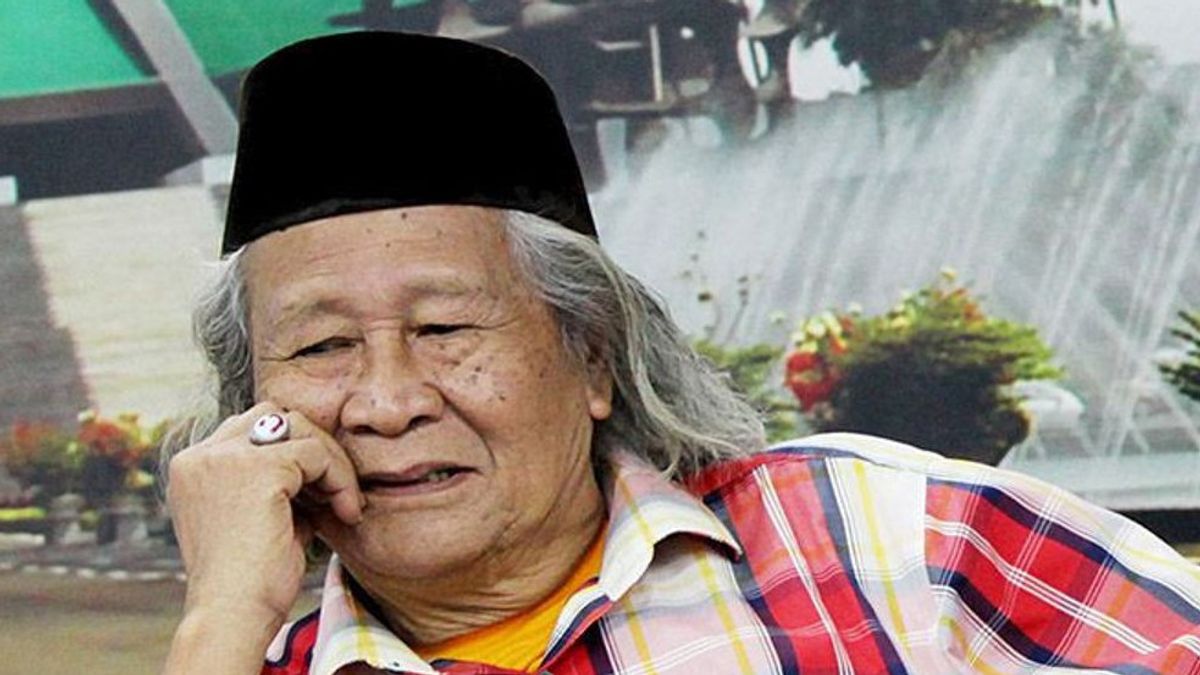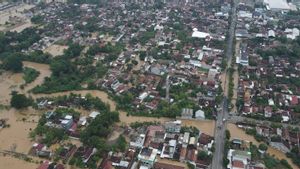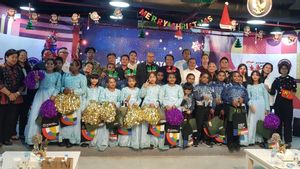JAKARTA - A history expert from Australia, Lance Castles, once caused an uproar. His writing The Ethnic Profile of Jakarta (1967) has recently disturbed the whole Betawi Land. He argues that Betawi ethnicity only emerged in the 20th century. Even then, the dominant forming element came from slaves.
Betawi dedengkot sewot is not playing games. Ridwan Saidi, let alone. The Betawi cultural observer called the conclusions expressed by the Megagabah Castles. The Betawi people are not descendants of slaves as revealed by Lance Castles.
Batavia's existence (now: Jakarta) as a trading dealer is second to none. This status made researchers from various nations come to learn the intricacies of the city that had been a sign of the greatness of the Dutch Trade Company, VOC. Lance Castles, one of them. The historical expert from Australia came and researched the development of the city of Batavia.
The results of his research were published in the journal Indonesia published by Cornell University in 1967. The Ethnic Profile of Jakarta was chosen as the title. His writing received a good reaction. Many were amazed by the analysis that was revealed by the Castles. Many also quoted him.
Mainly, regarding one of the dominant elements of the formation of Betawi ethnicity. He revealed that the presence of the slaves was the estuary of the emergence of the Betawi people. The Castles concluded that they looked at the VOC power in the hands of the Governor-General, Jan Pieterszoon Coen.
He saw that Coen's presence had a central role. Coen dared to conquer Jayakarta (the Banten Sultanate language). He then built a new city. Batavia, his name. However, Coen realized that the Dutch would not be enough in building Batavia.
Coen brought in various ethnic groups. From free citizens and slaves. The arrival was the beginning of the story of the presence of many slaves in Batavia. Then, that reason made the Castles consider the Betawi people of slave descent.
The other free people are Moors (Muslims from South India), Maluku, Bali Bugis and Ambon. Nevertheless, the number of free people in Batavia is generally less large than the slaves. At first, the Dutch brought these slaves from South Asia, namely from the coasts of Corombel, Malabar, Bengal, and from Arakan in Burma,
"Gradually especially after the East Indies Trade company handed over its base in Arakan (1665) the archipelago is the main source that provides slaves. In further developments, Sumbawa, Sumba, Flores, Timor, Nias, Kalimantan, and Pampanga in Luzon contributed to the supply of slaves. However, the main sources that consistently supply slaves are Bali and South Sulawesi," explained Lance Castle in his writing which was later used as books by the Bamboo Community entitled Ethnic Profile Jakarta (2017).
The beginning of Castles' writing was not a problem. The writing is considered so important as a contribution of knowledge related to Jakarta's growth and development. However, recently many Betawi people have been offended.
The historian and founder of the Bamboo Community, JJ Rizal, explained that the article had just become a polemic because many historical figures, anthropology, and students from the University of Indonesia (UI) quoted Castles writing when talking about Betawi people. While agreeing with Betawi people of slave descent.
Betawi ethnic dedengkot sewot is not playing. Ridwan Saidi, let alone. He did not accept the conclusion of the Castles which called Betawi people of slave descent. He was also looking forward to the opportunity to meet face-to-face with the Castles to compete with data and arguments.
Ulam-loved Pucuk arrived. Both Ridwan Saidi and Lance Castles met in a discussion related to the origins of the Betawi people. The discussion was held at the Nyi Ageng Serang Building, Kuningan, Jakarta on December 3, 2001.
In the discussion, Castles only found out that his writing offended the Betawi people. Ridwan Saidi called the Betawi people not slaves. He explained that the Betawi people did not appear for the first time when the Company entered Jakarta. More than that, Betawi people have existed for a long time, since the time of the new stone (Neolitium).
Betawi people are already scattered throughout Jakarta. It is also believed that the Betawi people are not descendants of slaves as revealed by the Castles. Betawi people are descendants of noble people who live in Warakas Village. A local village of the Salakanegara Kingdom.
Therefore, the Betawi people already exist. In fact, long before the VOC conquered Jayakarta. This assumption is evidenced by the presence of the Sunda Kelapa port which has been famous for a long time as a strategic port.
The stone stalls were a man-produced tool in the past that was versatile, before they made a runway for farming. Excavation results in Jakarta in the 1970s, almost evenly distributed stone axes were found throughout Jakarta, namely in Cengkareng, Sunter (Sontar), Cilincing, Kebon Sirih, Tanah Abang, Rawa Belong, Sukabumi, Kebon Nanas, Jatinegara, Cawang, Cililitan, Kramat Jati, Condet, Pasar Minggu, Pondok Gede, Tanjung (Timur).
Lenteng Agung, Klapa Dua, Cipete, Pasar Jumahat, Karang Tengah, Ciputat (Tangerang), Pondok Jengkol (Tangerang), Pondok Cabe (Tangerang), Cipayung (Tangerang), Serpong (Tangerang). The discovery of the stone ax proved that from 3,000 to 4,000 years ago the population spread rate in Kalapa was so evenly distributed. This is the proto Betawi man," said Ridwan Saidi as quoted by Heru Erwantoro in his writing in the Patanjala Journal entitled Etnis Betawi: Historis Study (2014).
The English, Chinese, Japanese, Arabic, and French versions are automatically generated by the AI. So there may still be inaccuracies in translating, please always see Indonesian as our main language. (system supported by DigitalSiber.id)













